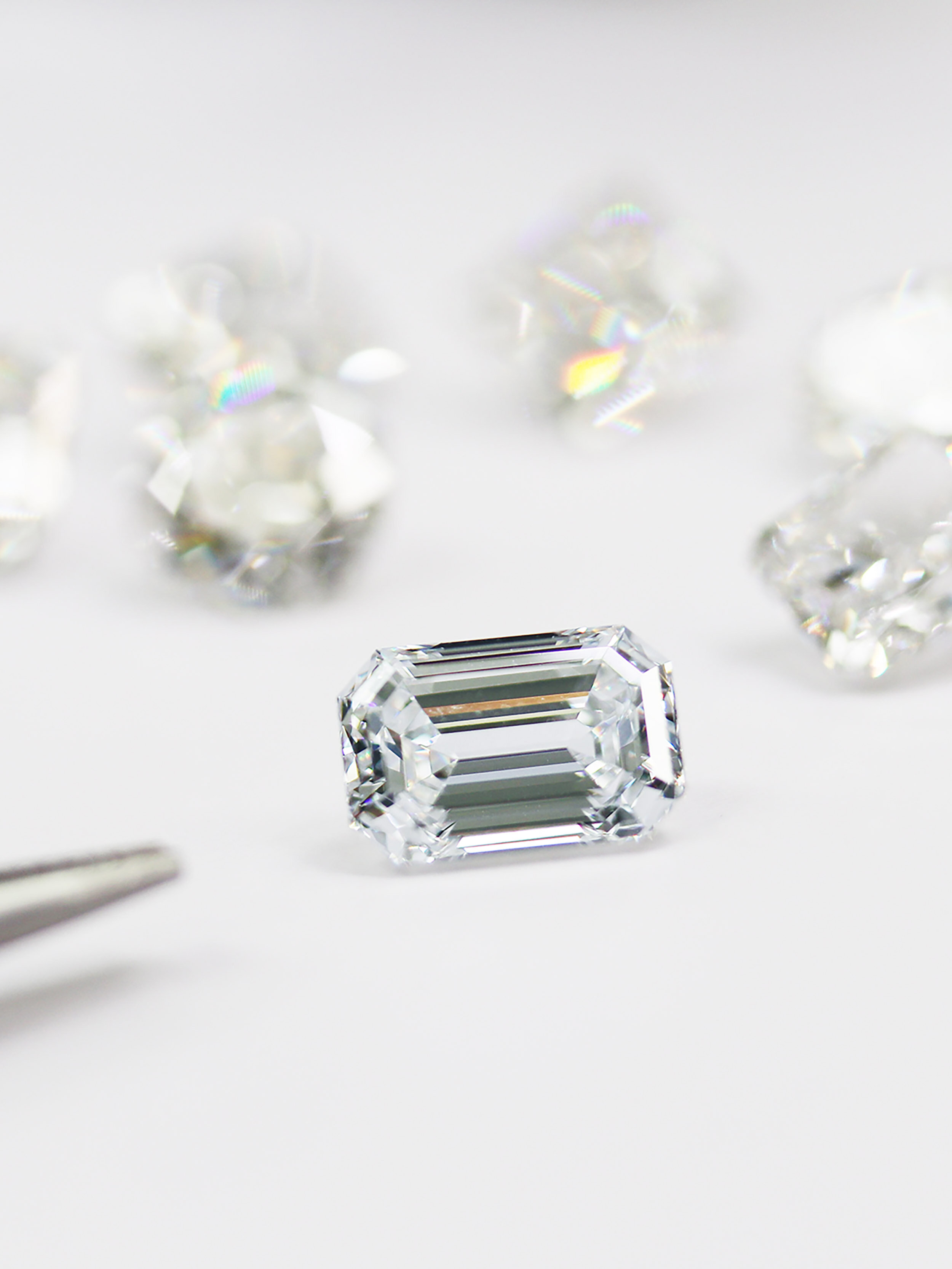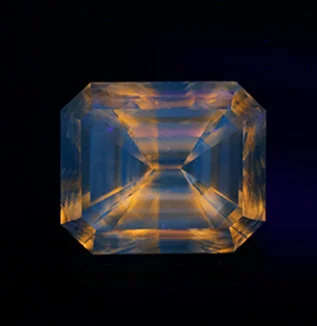Blue Nuance in Lab Diamonds
Blue nuance is a tinge of blue color present in HPHT diamonds resulting from excess boron in the diamond after the growth process. Lab diamonds with a measurable amount of boron are considered Type IIb, not Type IIa.
An HPHT grown emerald cut with blue nuance. This diamond received an H color grading from IGI.
A CVD grown emerald cut without blue nuance. This diamond received an H color grading from IGI.
On the left, a 3.05ct F VS1 Cushion grown via the HPHT method with noticeable blue nuance. On the right, a 3.01ct E VS2 radiant grown via the CVD method without blue nuance.
How does blue nuance occur?
Boron is often introduced during HPHT growth as a way to remove nitrogen. Removing boron after it has been introduced is very challenging and expensive. Hence, excess boron can be a sign of a grower taking short cuts to try and grow quickly, but not well.
Do all HPHT diamonds have blue nuance?
No. Many HPHT grown lab diamonds are beautiful, icey white, and have no blueish undertones at all. Whether or not an HPHT diamond has blue nuance is not printed on a grading report and is often only something that can be judged in person. The more slowly and carefully an HPHT diamond is grown, the less likelihood of excess boron. Diamonds without blue nuance are far more expensive to grow and fetch a higher retail price.
How does it present to the naked eye?
Lab diamonds with blue nuance will have an unnatural blueish undertone. Identifying the color can be challenging for a non lab diamond expert, but once you see it you cannot un-see it. Blue nuance is often difficult to spot in v360 videos on ecommerce web sites because the color and tone of the videos can be manipulated to hide blue undertones.
Lab diamonds and mined diamonds are both graded for color culet up. The lab diamond on the left is HPHT grown with blue nuance, the diamond on the right is CVD grown with no boron present.
How does this affect grading?
Lab diamonds, just like mined diamonds, are graded for their color culet up. Their presence of color relative to other diamonds is recorded as a color grade from D to Z. This means that an HPHT diamond with significant blue color present will receive a lower color grade than one without blue color present. This is one of many reasons it is imperative that a lab diamond expert inspect your diamond before purchase.
Lab diamond grading reports may also say “blue nuance” in the comments.
What are alternatives to blue nuance?
Some growers introduce titanium or aluminum to remove nitrogen during growth. Excess titanium, in particular, can leave an HPHT diamond with a gray undertone rather than blue. These gray undertones are difficult to spot in 360 videos online and not obvious from a grading report.
How does this affect the diamond other than color?
Notably, the presence of boron can make a lab diamond electrically conductive. This means that on some cheap diamond testers, a certified lab diamond can read as moissanite. Additionally, the presence of boron can make a lab diamond have a medium to strong orange phosphorescence.
Shining a UV light on an HPHT lab diamond in darkness can expose phosphorescence.
An HPHT diamond with strong phosphorescence will glow orange once you turn the UV light off.
What is phosphorescence?
Phosphorescence presents in type iib lab diamonds as a light blue or orange glow after it is exposed to UV light. The glow can last a few seconds to several minutes. Phosphorescence is not the same thing as fluorescence, although it is related. Even if an HPHT diamond has no measurable fluorescence and contains no phosphorus, it can still have phosphorescence.
As part of our QC inspection, we expose all HPHT diamonds to UV light in total darkness. The diamond on the far left is a 3.12ct D VS1, the diamond in the middle is a 4.10ct D VVS1 round, and the diamond on the right is a 4.12ct E VVS1. All were produced by the same grower.
Upon turning off the UV light, the diamond on the far left showed no phosphorescence. The diamond in the middle showed faint phosphorescence (acceptable at Ada Diamonds), and the diamond on the right exhibited strong phosphorescence. The diamond on the far right failed our quality control.
How can I see it?
HPHT diamonds with strong phosphorescence take on an unnatural glow, especially if placed in darkness immediately following exposure to direct sunlight.
The Bottom Line:
Not all lab diamonds are created equal, even within the same 4Cs. This is why it is imperative that a lab diamond expert inspect your lab diamond before purchase. It is also why you should work with a retailer who will take back your lab diamond via a trade-in or resale program to ensure you are buying a quality stone.




















